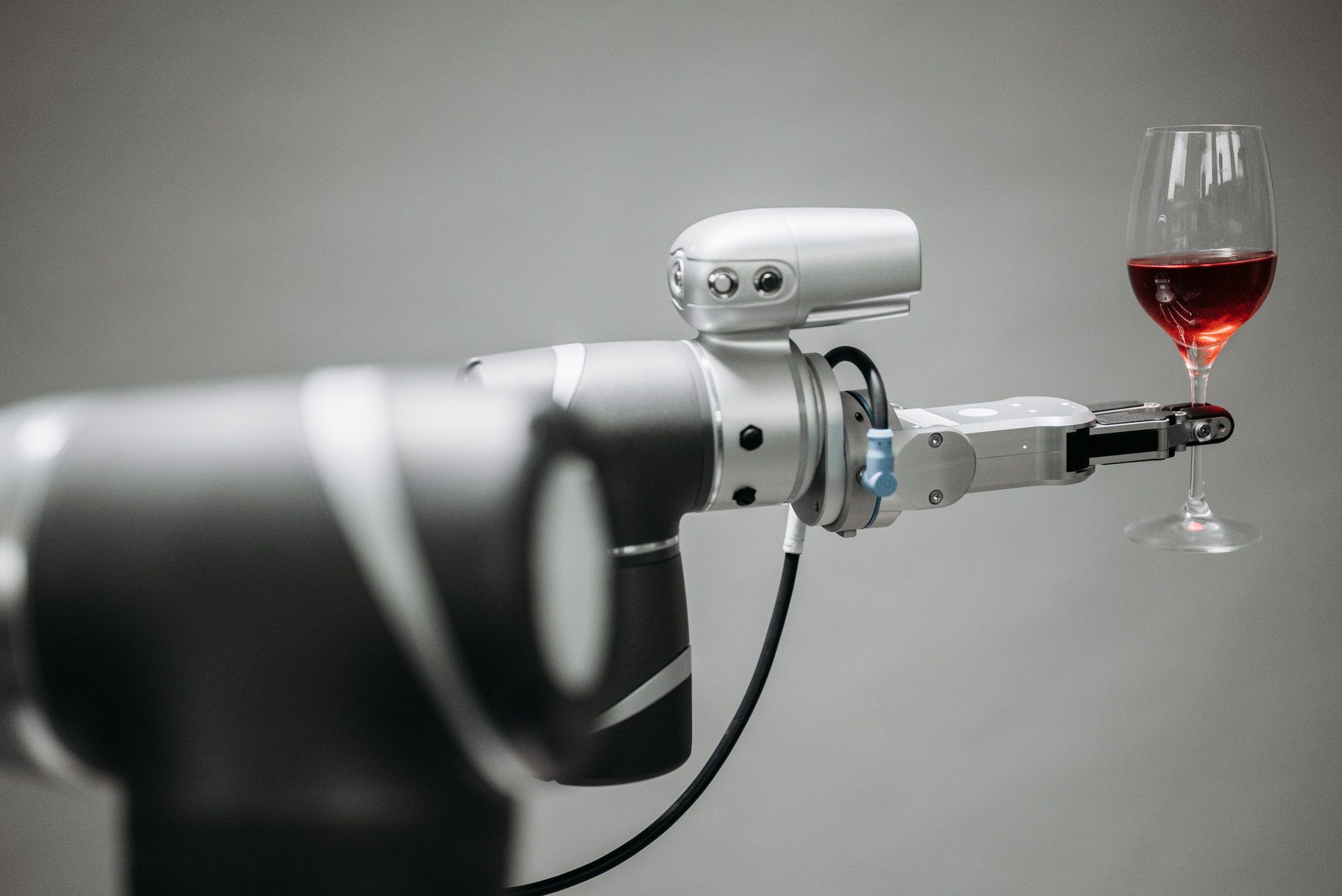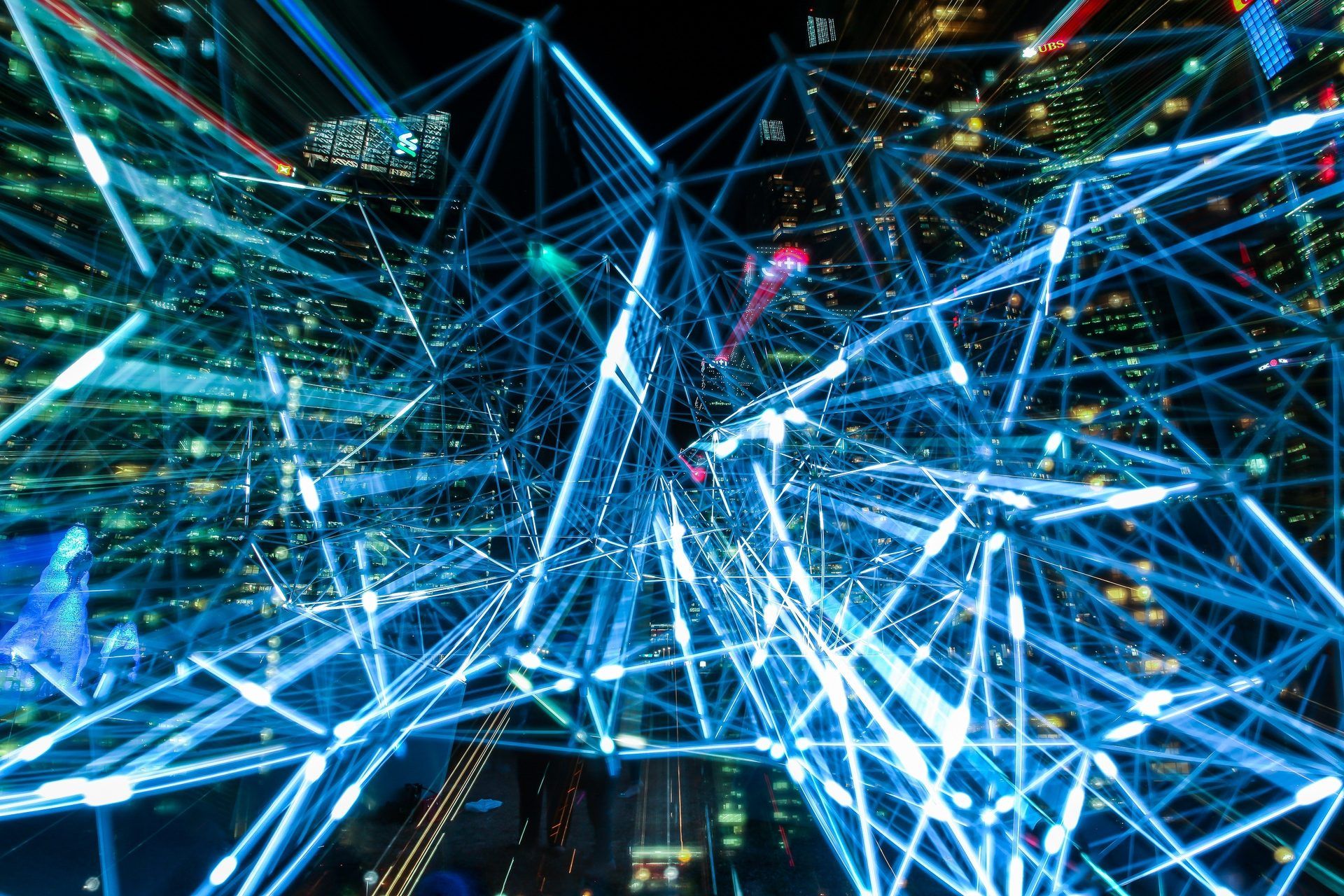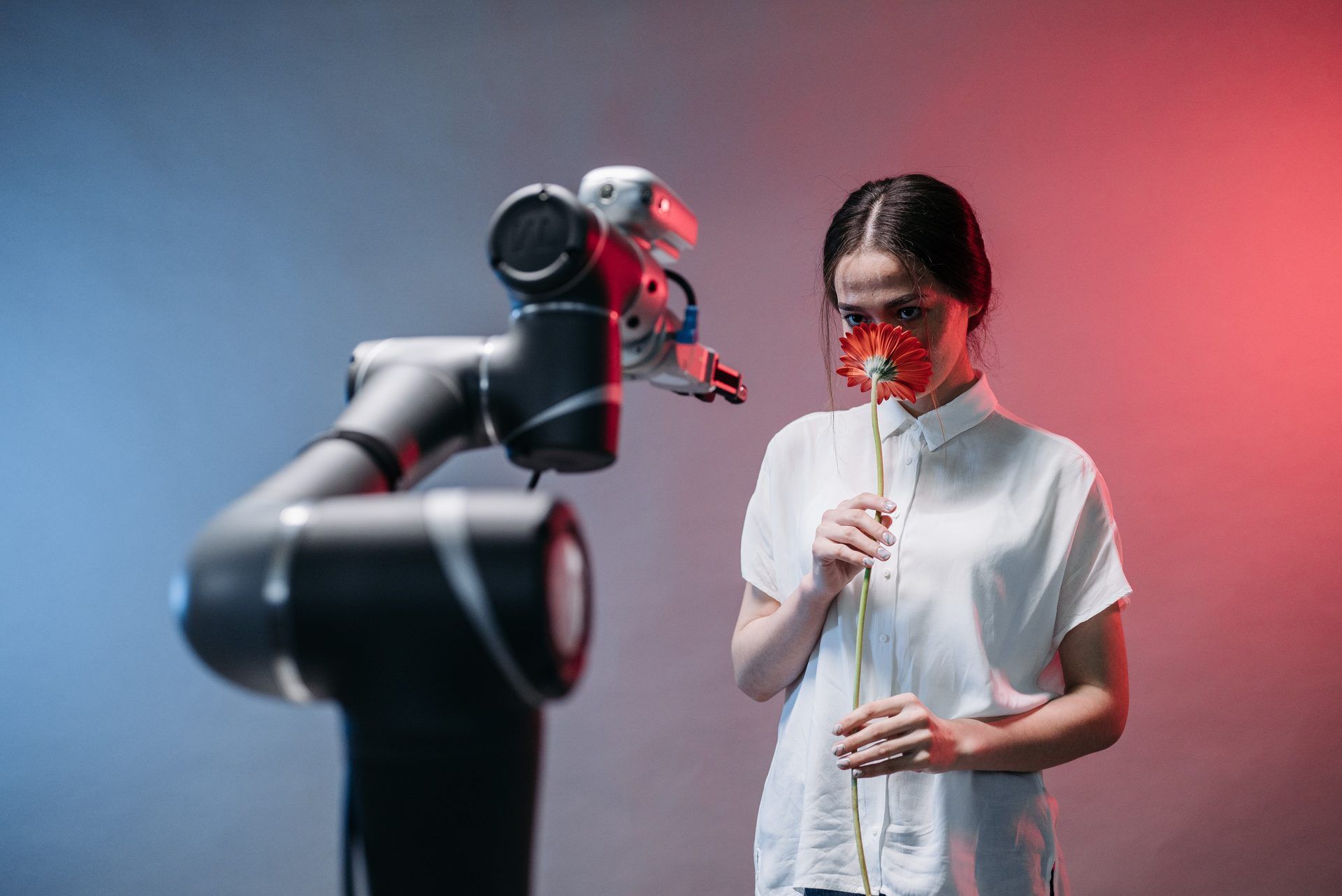Are you ready to learn what is artificial super intelligence? You undoubtedly hear a lot about artificial intelligence these days if you live on our planet. AI is considered a threat to human employment opportunities even though we use artificial intelligence in everyday life.
What is artificial super intelligence?
What is artificial super intelligence is the question of the day. The term “artificial superintelligence” describes the stage at which computer intelligence exceeds that of humans. Since the 1970s, the phrase “artificial intelligence” has been used to describe computers’ capacity for human-like thought. Taking it a step further, artificial superintelligence envisions a scenario in which a computer’s cognitive capacity exceeds that of a human.
Superintelligent machines will be able to conceptualize abstractions and interpretations that are inconceivable to humans. This is because only a small portion of the human brain’s billions of neurons are capable of thinking.
Superintelligence has long served as a source of inspiration for dystopian science fiction that showed humanity being overthrown, defeated, or imprisoned by machines.
In order to prompt actions, ASI systems can instantly comprehend, evaluate, and process the environment. As a result, it is anticipated that super-intelligent machines will be able to make and solve decisions with greater accuracy than people.
Superintelligent machines are self-aware and capable of conceptualizing concepts and interpretations that are not possible for humans. This is due to the fact that just a small number of the human brain’s few billion neurons are capable of thinking. ASI is capable of understanding and interpreting human emotions in addition to duplicating complex human behavioral intelligence. Based on the AI’s comprehension abilities, ASI creates its own emotional understanding, beliefs, and desires. It is a good definition of what is artificial super intelligence.

Superintelligence is currently more of a theoretical potential than a practical reality due to the tendency of current computer science and AI research to focus on artificial narrow intelligence (ANI). This suggests that AI software is created exclusively to address particular issues.
To better understand the subject, let’s briefly recall what is AI and it’s types including ASI.
What is artificial intelligence?
The goal of artificial intelligence, a subfield of computer science, is to emulate or reproduce human intellect in machines so that they may carry out tasks that ordinarily call for human intelligence. Planning, learning, reasoning, problem-solving, and decision-making are some of the programmable capabilities of AI systems.
Algorithms, which employ methods like machine learning, deep learning, and rules, power artificial intelligence systems. In order to help artificial intelligence (AI) systems learn, machine learning algorithms provide them with computer data. Without having to be deliberately designed to do so, AI systems improve over time through machine learning.
Anything that uses AI, such as Google’s search algorithms, IBM Watson, or even autonomous weapons. That’s why there are 3 types for classifying them.
Artificial intelligence types
Artificial intelligence (AI) technologies are categorized by their ability to imitate human features, the technology they employ to do so, the applications they have in the actual world, and the theory of mind, which we’ll cover in more detail below.

All artificial intelligence systems, both real and imagined, can be classified into one of three categories using these traits as a guide:
- Artificial narrow intelligence (ANI)
- Artificial general intelligence (AGI)
- Artificial superintelligence (ASI)
Artificial narrow intelligence (ANI) / Weak AI / Narrow AI
The only kind of artificial intelligence we have so far effectively generated is artificial narrow intelligence (ANI), often known as weak AI or narrow AI. Narrow AI is goal-oriented, created to carry out a single task, such as driving a car or conducting an online search, and is exceptionally intelligent at carrying out the particular task it is taught to do.
Although these machines appear clever, they only have a limited range of capabilities, which is why this kind of artificial intelligence is sometimes referred to as weak AI. Narrow AI just replicates human behavior based on a limited set of factors and situations; it does not mimic or replicate human intelligence.
Narrow Natural language processing (NLP), which is used to carry out tasks, is where machine intelligence in AI originates. Chatbots and other comparable AI technologies clearly use NLP. AI is intended to connect with people in a natural, individualized way by comprehending speech and writing in natural language.
Most AI is limited memory AI, where machines use large volumes of data for deep learning. Deep learning enables personalized AI experiences, for example, virtual assistants or search engines that store your data and personalize your future experiences.
Artificial general intelligence (AGI) / Strong AI / Deep AI
Artificial general intelligence (AGI), also known as strong artificial intelligence (AI) or deep artificial intelligence (AI), is the idea of a machine with general intelligence that mimics human intelligence and/or behaviors, with the ability to learn and apply its intelligence to solve any problem. In each given circumstance, AGI is capable of thinking, comprehending, and behaving in a manner that is identical to that of a human.
Strong AI is still a work in progress for scientists and researchers in AI. To be successful, they would need to devise a method of imbuing machines with consciousness and a whole set of cognitive capabilities. Experiential learning would need to be advanced in order for machines to be able to apply it to a larger variety of issues as opposed to just being more proficient at a single task.
A theory of mind AI framework is used by strong AI, which refers to the capacity to ascertain the wants, emotions, beliefs, and mental processes of other intelligent beings. Theory of mind level AI focuses on teaching machines to fully comprehend people rather than replicating or simulating human thought processes.
It is not surprising that developing powerful AI is so difficult given that the human brain serves as the prototype for universal intelligence. Researchers are finding it difficult to duplicate basic mental processes like sight and movement because we don’t fully understand how the human brain works. But what if we could teach it one day?
Artificial Super Intelligence (ASI)
Again, what is artificial super intelligence? Artificial super intelligence (ASI) is a hypothetical kind of artificial intelligence (AI) that goes beyond simply mimicking or understanding human intelligence and behavior. With ASI, computers become self-aware and outperform human intelligence and ability.

Theoretically, ASI would succeed at everything we do; math, science, athletics, art, medicine, hobbies, interpersonal connections, everything, in addition to replicating the complex intelligence of humans. ASI would be more able to retain information and process and analyze material and cues more quickly. As a result, super-intelligent beings would have much better decision-making and problem-solving skills than humans.
It may sound exciting to have such potent technologies at our hands, but the idea itself has many unintended drawbacks. They could be capable of concepts like self-preservation if self-aware super-intelligent beings ever existed. But it is purely speculative to predict the effects this will have on humanity, our survival, and our way of life. Superintelligence has long served as the inspiration for futuristic dystopias in which robots conquer, overturn, or enslave humans.
Nick Bostrom explains the initials with “The Unfinished Fable of Sparrows” in his book Superintelligence. In essence, the plan was for certain sparrows to keep an owl as a pet. All of the sparrows thought the idea was fantastic, but one of them expressed skepticism and asked how they could possibly govern an owl. This worry was put on hold in the spirit of “we’ll deal with that problem when it’s a problem” for the time being.
Similar worries about the development of super-intelligent life have been expressed by Elon Musk, who sees humans as the sparrows in Bostrom’s metaphor and the owl as the potential ASI. The “control problem,” like it was with sparrows, appears to be troubling because we may only have one opportunity to fix it.
Artificial super intelligence examples
Based on detailed studies, the distance between AGI and ASI is extremely small. It will proceed at the speed of light and take place in a matter of months, weeks, or perhaps even an instant. Nobody is certain of what will occur after that.
The full development of artificial intelligence, according to some experts like Stephen Hawking, could spell the end of humanity. Others, like Demis Hassabis of Google, think that as AI becomes more intelligent, humans will grow better at preserving the environment, treating diseases, exploring the world, and comprehending themselves.
In spite of its futuristic glamour, artificial superintelligence appears to be a long way off from the advancement of the human species. In that regard, this so-called perceived AI variety demonstrates the conceptual boundaries of AI technology and the promises it makes, which won’t materialize for at least a few decades. Again, ASI is still theoretical. But, in movies, we saw various answers of what is artificial super intelligence such as:
- Skynet (Terminator)
- Jarvis (Marvel)
- David (Prometheus)
- R2D2 (Star Wars)

Is artificial super intelligence possible?
International research teams are working to develop more sophisticated AI. The foundation for ASI was laid by the idea that a machine should emulate and outperform the way a human brain functions.
It seems inevitable, in a really long time, that ASI will eventually outperform humanity in every respect. Chemical and biological limitations place limits on what the human brain is capable of. There are none for a super-intelligent sentient. With time, it will only get more intelligent and superior.
Super Intelligence vs Artificial Intelligence vs Artificial General Intelligence
For a better understanding of what is artificial super intelligence, you should understand the differences between the 3 types. Today, thanks to AI advancements, life is simpler. We are on the verge of discovering the true power of AI technology when ANI becomes an essential part of our life and AGI and ASI emerge.
Nevertheless, each sort of AI differs greatly from the others. Let’s examine the primary distinctions between ANI, AGI, and ASI.
| Category | Narrow AI | General AI | Super AI |
| Definition | Narrow AI lacks the ability to self-expand and tackle new challenges; it is concentrated on a single, focused task. | Strong AI can carry out a wide range of tasks, reason, pick up new skills, and develop cognitive powers that are on par with those of humans. | Super AI exhibits intelligence that is superior to that of humans. |
| Purpose | Narrow AI is programmed to perform only a limited range of predefined tasks in order to finish or solve a certain issue. | Strong AI will be self-aware and capable of carrying out any task that its “mind” can conjure up. | Super AI will outperform humans in intelligence and be better able to do any work. |
| AI Model | Narrow AI employs preprogrammed, fixed domain models. | Strong AI adapts to its environment and learns by itself. | Super AI develops a consciousness of its own, learns by itself, and grows. |
| Awareness | Self-awareness, artificial consciousness, and cognitive capabilities are absent from narrow AI. | Strong AI will be regarded as being highly sophisticated, intelligent, and fully self-aware, which implies that it will have common sense, creativity, and the capacity for emotional expression. | Super AI will mimic human thought processes and experiences in order to form its own emotional understanding, convictions, and wants. |
| Data processing | Data is categorized by narrow AI employing machine learning, deep learning, artificial neural networks, and natural language processing. | By utilizing advanced forms of machine learning, deep learning, natural language processing, and artificial neural networks, strong AI makes use of grouping and association. | In order to understand and interpret human emotions and experiences, super AI may use the human brain as a model. |
| Knowledge transfer | Knowledge cannot be transferred from narrow AI to other areas or tasks. | Strong AI uses knowledge transfer to tackle new tasks and domains. | Across tasks and domains, super AI will invariably practice knowledge transfer. |
| Implications | In specialized repetitive jobs like driving, diagnosing illnesses, and giving financial advice, narrow AI surpasses humans. | From obtaining a college degree to managing medical emergencies, strong AI competes with humans in every endeavor. | Super AI not only excels humans in societal goals and space exploration, but also poses a threat to the very survival of the human species. |
| AI stage | Today’s AI | Future AI – around 2040 | Soon after AGI |
What type of AI is Siri?
Apple’s computing and communications platform offers consumers an integrated, voice-activated personal assistant called Siri. Siri has been created to provide a seamless manner to communicate with the entire line of Apple products and has access to all of the devices’ built-in programs.
Depending on your setting preferences, you can ask Siri questions, give her (or him) commands to carry out on your behalf, or ask her to show you something.
Siri uses machine learning, natural language processing, and natural language production to properly function and continuously enhance its performance. All of these are examples of artificial intelligence, but Siri is technically not pure AI in and of itself; rather, it is a system that makes use of artificial intelligence. As a result, AI becomes a Narrow AI.
How to create artificial superintelligence?
We don’t absolutely need to create superintelligent AI ourselves for AI to lead to superintelligence. No, all we need to do is create an AI that is just a little bit better at creating AIs than we are.
Be really hypothetical; we have an intriguing ready answer for you. First of all, AI must have its own “hive” in addition to being developed.
AI
We should have an AI that, in the space of a human eyeblink, creates better AIs that create better AIs.
When AIs perfect this process of recursive self-improvement, superintelligence may be only around the corner.
Whole brain emulation
Whole brain emulation is another path to superintelligence (aka mind uploading). Simply said, scan a brain, upload the results to a computer, and play it.
Brain implants
By “updating” existing brains, superintelligence can be attained in a third approach. We preserve our squishy seats of intelligence; we just enhance them with technology advancements to make them better, more effective, etc.
Biological enhancements
IQ is positively impacted by healthy and proper nutrition during childhood, access to a top-notch education, physical activity, and mental stimulation from peers and family. Let’s assume for the time being that IQ testing is at least a partial/crude assessment of what we’re talking about in this piece, even though there is still debate over what they actually measure. Can we boost our intelligence?

Nootropics are drugs that promise to enhance brain abilities like creativity, focus, and memory. Currently, there is not enough evidence to support either their beneficial effects or any potential negative consequences, and their impact on intellect is only marginal. However, that doesn’t exclude change from occurring.
It’s likely that we will be able to improve current nootropics and create new ones as we learn more about intelligence and its correlations in brain structure and function. Remember the movie Limitless?
Networks aka the hive mind
Combining existing intelligence is the last method for developing a superintelligence. One brain is not as good as two, and so forth. The Neuralink discussed previously is only one example of a brain implant that can be used to accomplish this.
Is AI dangerous?
Many individuals are concerned about the “inevitability” and imminence of an AI takeover as a result of AI’s rapid growth and potent powers.

Elon Musk, who has similar worries about superintelligent creatures, would contend that whereas humans are represented by the sparrows in Bostrom’s metaphor, ASI is represented by the owl. The “control problem” is especially worrying since we could only have one chance to fix it, just like it was with the sparrows.
With the potential benefits of AI outweighing any drawbacks, Mark Zuckerberg is less concerned about this fictitious control issue.
The majority of researchers concur that highly intelligent AI is unlikely to display human emotions, and there is no reason to believe that ASI will develop malice. There are two main scenarios that have been identified as the most probable when analyzing how AI might turn into a risk.
Potential artificial super intelligence (ASI) threats
What is artificial super intelligence’s potential threat? Although the idea of machines surpassing human intellect has many proponents and supporters, several philosophers and technologists have expressed caution. They think that, as depicted in a number of Hollywood productions like Star Trek and Matrix, such a highly developed type of intelligence could result in a global catastrophe. Furthermore, even tech luminaries like Elon Musk and Bill Gates are concerned about ASI and see it as a danger to humanity.
Here are a few hypothetical superintelligence dangers:
- Loss of control and understanding
- The weaponization of super AI
- Failure to align human and AI goals
- Malevolent superintelligence
- The danger of nuclear attacks
- Ethical implications
Potential artificial super intelligence (ASI) advantages
What is artificial super intelligence’s potential advantage? Emerging technology known as artificial superintelligence (AI) replicates human thought, feelings, and experiences in AI systems. Super AI has been criticized for its existential risks, but proponents argue that it has the potential to revolutionize every industry.

Let’s examine the some possible benefits of super AI:
- Reduction in human error
- Replace humans to accomplish risky tasks
- 24×7 Availability
- Explore new science frontiers
- Medical advances
Conclusion
We are on the verge of narrow artificial intelligence, in which algorithms are given a particular task, such automatic spam filtering or e-commerce site recommendations, to name a few examples. In other words, it is a weak AI because it is simpler than more sophisticated technology.
Corporations, on the other hand, desire to attain ASI by training their current rudimentary AI systems to perform more intricate and many tasks. Research is now being done to make existing AI systems more sophisticated. Even though ASI is still just a theoretical concept, experts believe the technology will soon become a reality.
Despite the worries and difficulties associated with ASI, it is believed to have the ability to address some of the most pressing problems of our time, including disease epidemic, gender empowerment, and climate change.





